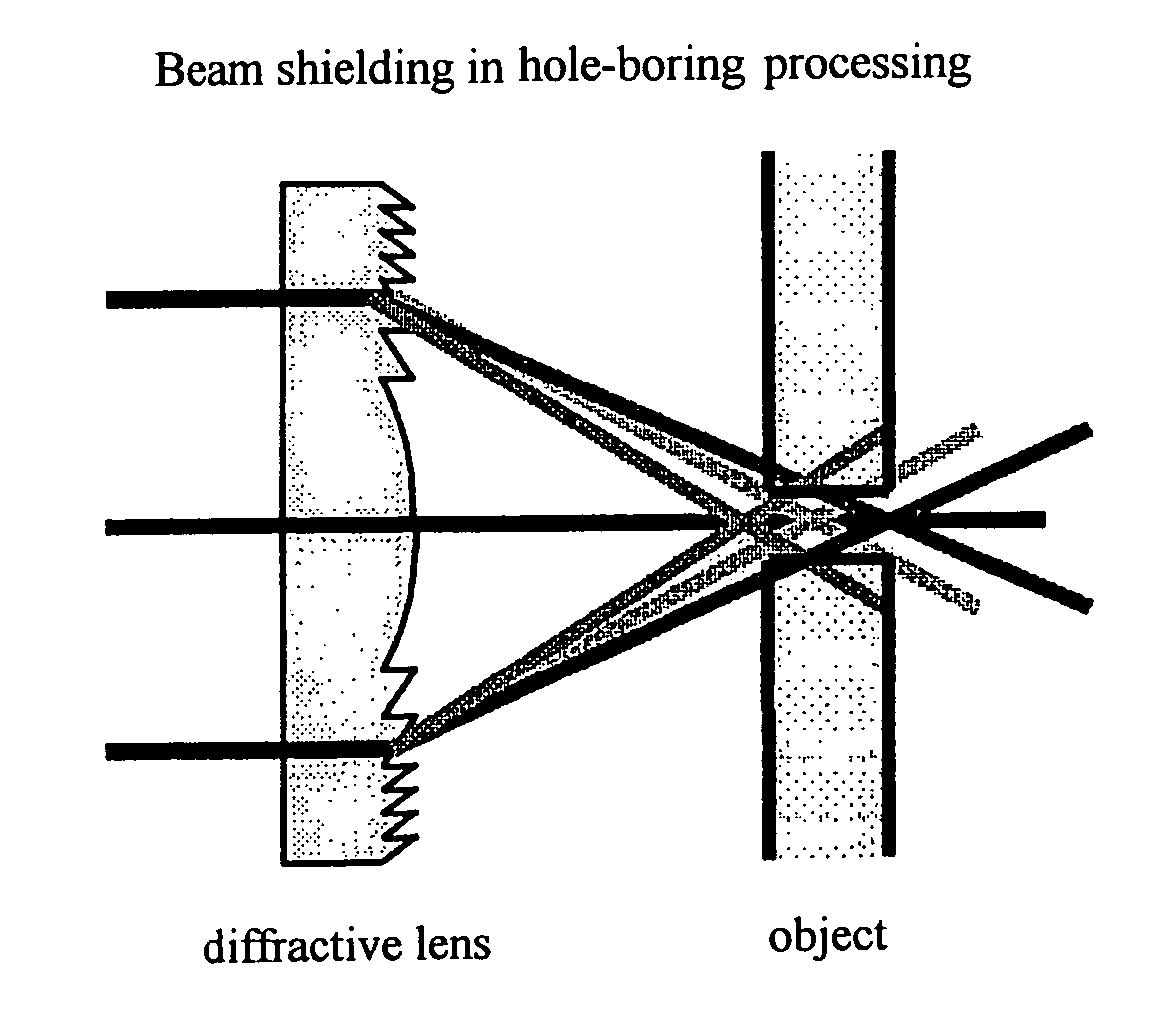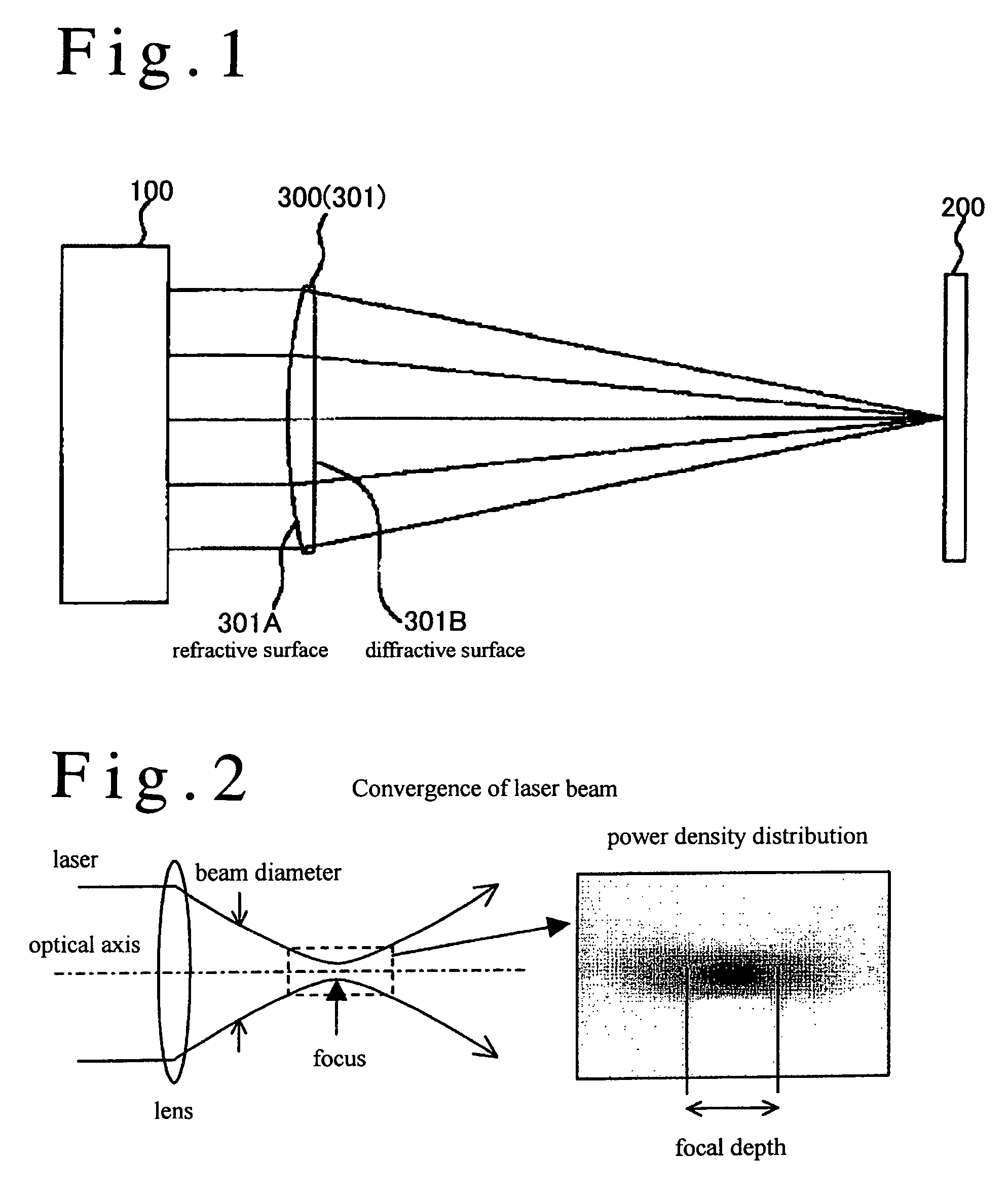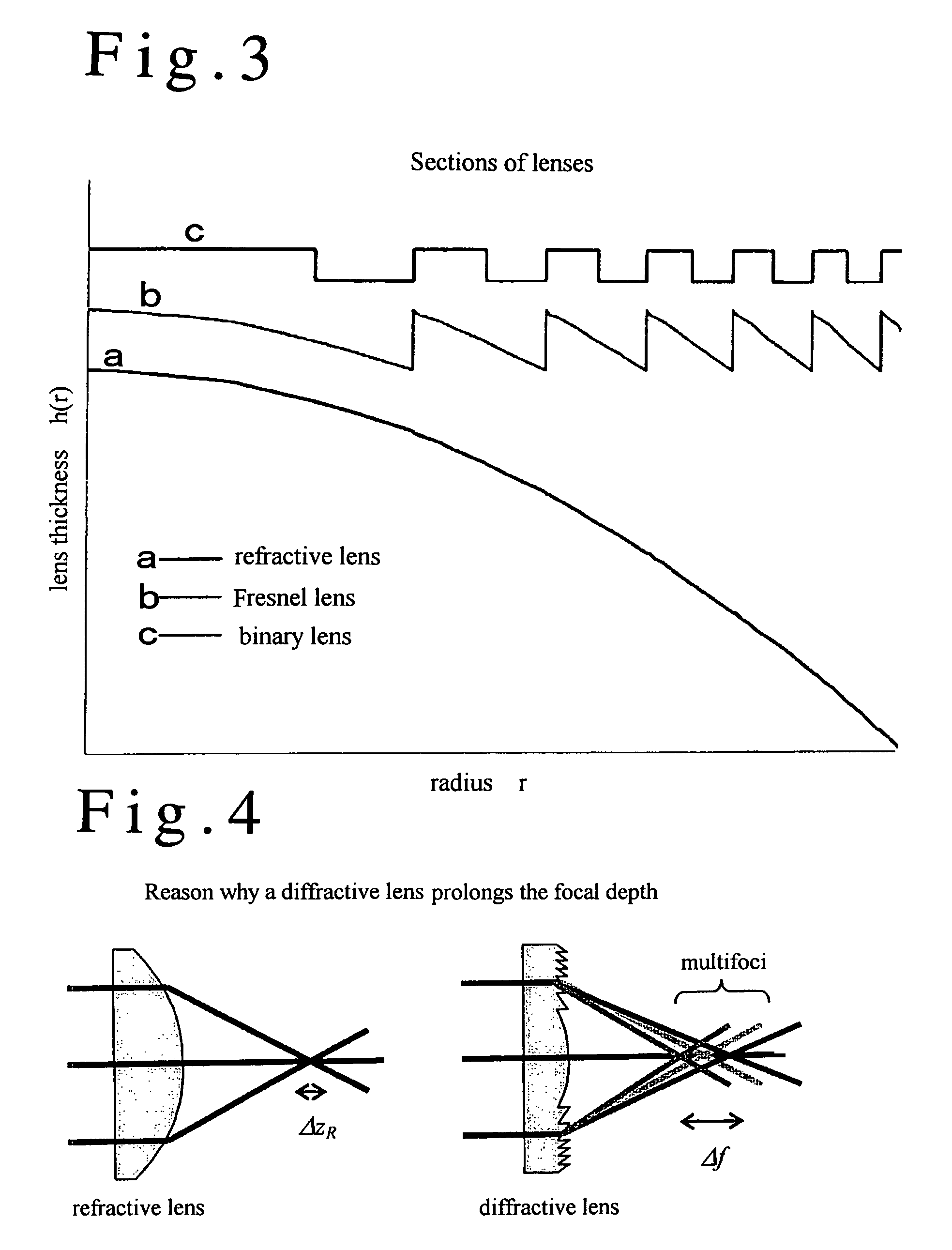Laser processing method and laser processing apparatus
a laser processing and laser processing technology, applied in the field of laser processing methods and an apparatus, can solve the problems of new aberration, difficulty in adjusting the aperture, so as to reduce the accuracy required of the distance between the lens and the lens. the effect of reducing the accuracy
- Summary
- Abstract
- Description
- Claims
- Application Information
AI Technical Summary
Benefits of technology
Problems solved by technology
Method used
Image
Examples
embodiment 1
[0143]Laser FWHM Pulse width: Δt=120 fs (1.2×10−13 s)
[0144]Incident beam FWHM diameter: Δi=4.7 mm (w0=4.0 mm)
[0145]Lens Refractive Lens and Diffractive Lens
[0146]Focal Length: f0=100 mm
[0147]Z-parameter: 2f0cΔt / Δi2=0.32
[0148]The Z-parameter of 0.32 is between 0.25 and 1 (0.25<0.32<1), which satisfies the aforementioned requirement between 0.25≦Zp≦1.
[0149]The convergence properties of a refraction lens and a diffraction lens have been calculated on the abovecited conditions. FIG. 5 shows the results of calculations of power densities converged by the refraction lens and the diffraction lens. Left column figures of FIG. 5 demonstrate time-dependent spatial distributions of power density by the refractive lens. Right column figures of FIG. 5 show time-dependent spatial distributions of power density converged by the diffractive lens. The abscissa denotes distances. Individual figures have a length of 900 μm in the horizontal direction and a width in the vertical direction. Definition o...
PUM
| Property | Measurement | Unit |
|---|---|---|
| height | aaaaa | aaaaa |
| wavelength | aaaaa | aaaaa |
| focal length | aaaaa | aaaaa |
Abstract
Description
Claims
Application Information
 Login to View More
Login to View More - R&D
- Intellectual Property
- Life Sciences
- Materials
- Tech Scout
- Unparalleled Data Quality
- Higher Quality Content
- 60% Fewer Hallucinations
Browse by: Latest US Patents, China's latest patents, Technical Efficacy Thesaurus, Application Domain, Technology Topic, Popular Technical Reports.
© 2025 PatSnap. All rights reserved.Legal|Privacy policy|Modern Slavery Act Transparency Statement|Sitemap|About US| Contact US: help@patsnap.com



